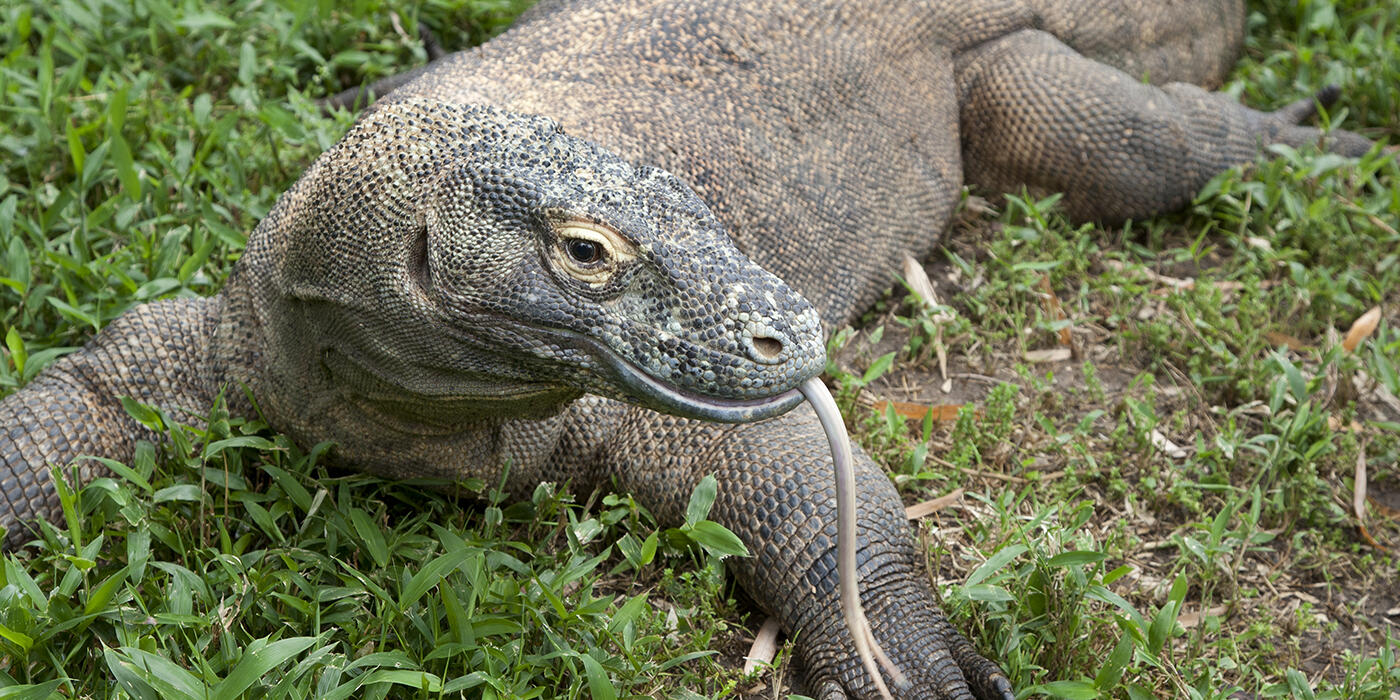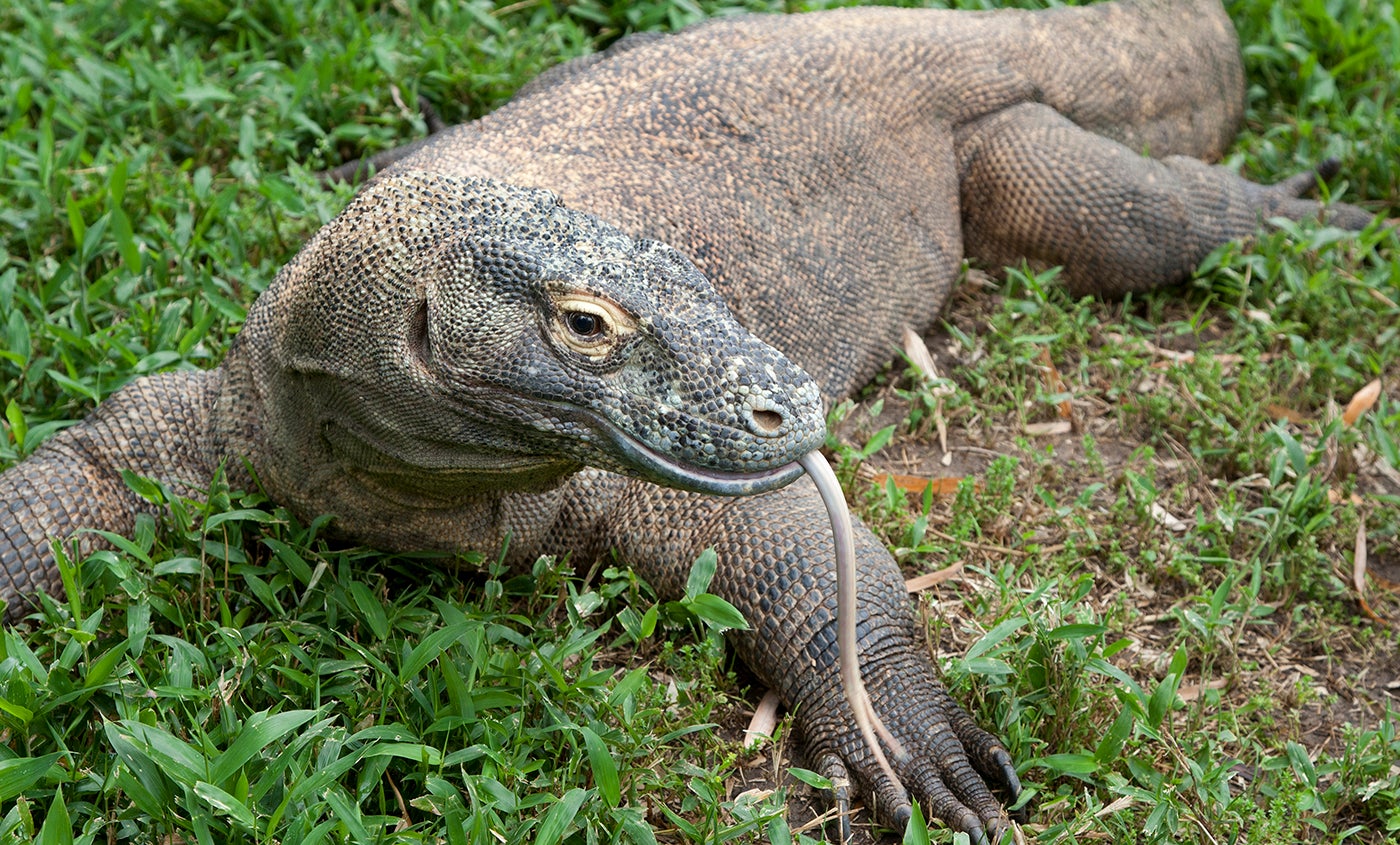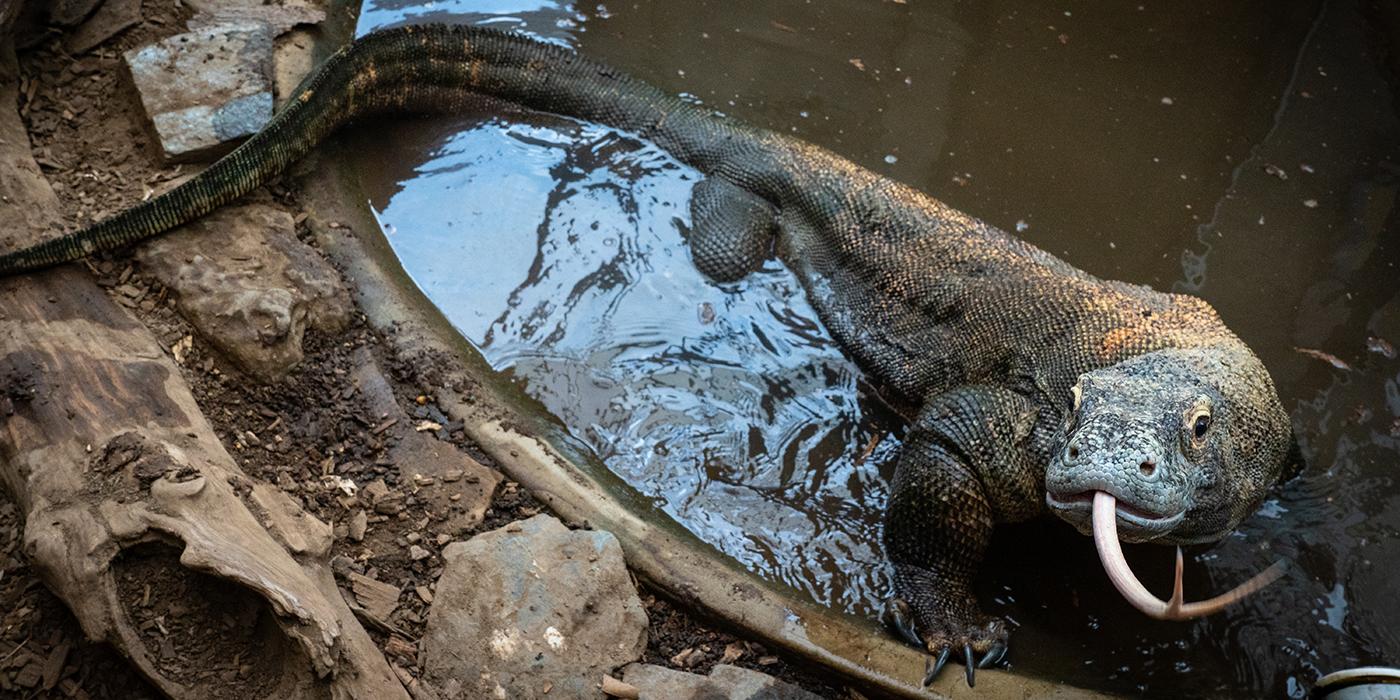Elderly Komodo Dragon Dies at the Smithsonian’s National Zoo and Conservation Biology Institute

Reptile Discovery Center staff at the Smithsonian’s National Zoo and Conservation Biology Institute’s (NZCBI) campus in Washington, D.C., are mourning the loss of Murphy, a 26-year-old male Komodo dragon who died Dec. 23, 2024. The median life expectancy for male Komodo dragons in human care is about 20 years. The Reptile Discovery Center team fondly remembers Murphy as a very charismatic individual, whose laid-back personality and gentle nature earned him “icon” status at the Zoo. Murphy’s curiosity often led him to engage with visitors near the glass of his habitat, which made him a crowd favorite. Zoo visitors can see a young male Komodo dragon named Onyx at the Reptile Discovery Center.
In 2019, Reptile Discovery Center keepers noticed Murphy seemed to have difficulty climbing over small objects in his habitat and was reluctant to explore areas with steeper inclines. Zoo veterinarians examined Murphy, and radiographs revealed arthritis in both of his knees and his right elbow. The animal care team turned to an innovative treatment—one that is typically used in dogs—to block the inflammation and ease Murphy’s discomfort, lessening the need for pain-relieving medications. This in combination with other therapies helped stabilize Murphy’s symptoms for many years.
On Dec. 13, keepers noticed a change in Murphy’s demeanor; the typically food-motivated dragon refused his diet items, appeared to have difficulty swallowing and was lethargic. To treat his symptoms, Zoo veterinarians administered supportive care, including antibiotics, fluid therapy, appetite stimulant and antinausea medications. Concerned that Murphy’s symptoms continued to progress, animal care staff anesthetized Murphy and conducted a diagnostic exam Dec. 23 to further evaluate his condition. It revealed Murphy’s degenerative joint disease had progressed in his knees, elbow and ankles, and fluid had accumulated around his heart. Due to Murphy’s advanced age, poor prognosis and declining quality of life, animal care staff made the decision to euthanize him.
Murphy hatched at Zoo Miami in Florida in October 1998 and came to the Smithsonian’s National Zoo in July 1999 when he was around 9 months old. Many zoo animals participate in the Association of Zoos and Aquariums’ Species Survival Plan (SSP). The SSP scientists determine which animals to breed by considering their genetic makeup, nutritional and social needs, temperament and overall health. In 1992, the Smithsonian’s National Zoo became the first zoo to successfully hatch Komodo dragons outside of Indonesia, a breakthrough for the conservation of this endangered species. Because Murphy’s parents and siblings’ genes were well-represented in the North American population, he did not participate in the breeding program. Rather, he served as an ambassador for his species, teaching Zoo staff and visitors about Komodo dragon biology, behavior and the important role they play as top predators in the ecosystem.
Komodo dragons have thick, leathery skin, strong claws, sharp teeth and a venomous bite, so keepers must be very careful when working with these reptiles. Murphy’s calm demeanor allowed the animal care team to share an enclosure with him when they needed to clean, conduct daily health checks or work with the veterinary team to administer treatments. Often, Murphy perked up when his keepers approached, especially if they brought him food. Despite being a powerful dragon, Murphy was relaxed whenever keepers would enter his enclosure. Occasionally, he would supervise keepers as they went about beautifying his exhibit. Keepers recall that once his pool was clean, Murphy would go for a dip and immediately make it dirty again.
His intelligence was on display during training sessions, which enabled Murphy to voluntarily participate in his own health care—including awake blood draws, radiographs and laser therapy treatments. He contributed greatly to the community of Komodo dragon caretakers’ knowledge of Komodo dragon biology, ecology, conservation and behavior, including research studies about how these giant monitor lizards play.
Komodo dragons are the world’s largest lizards. They can reach lengths of about 10 feet and weigh about 150 pounds. Native to the tropical forest, grassland and scrubland habitats of the Indonesian islands of Komodo, Rintja and Flores, Komodo dragons are considered endangered by the International Union for Conservation of Nature. Scientists estimate there are less than 1,400 individuals in the wild. One major threat to their long-term survival is habitat loss. Parts of their native sea islands are expected to submerge in the next century due to the effects of climate change. Human encroachment and overhunting of deer and other prey animals make it difficult for Komodo dragons to thrive in their habitat.
# # #
Photo caption: Komodo dragon Murphy explores his outdoor habitat at the Reptile Discovery Center.
Photo credit: Mehgan Murphy, Smithsonian’s National Zoo and Conservation Biology Institute
Related Species:


